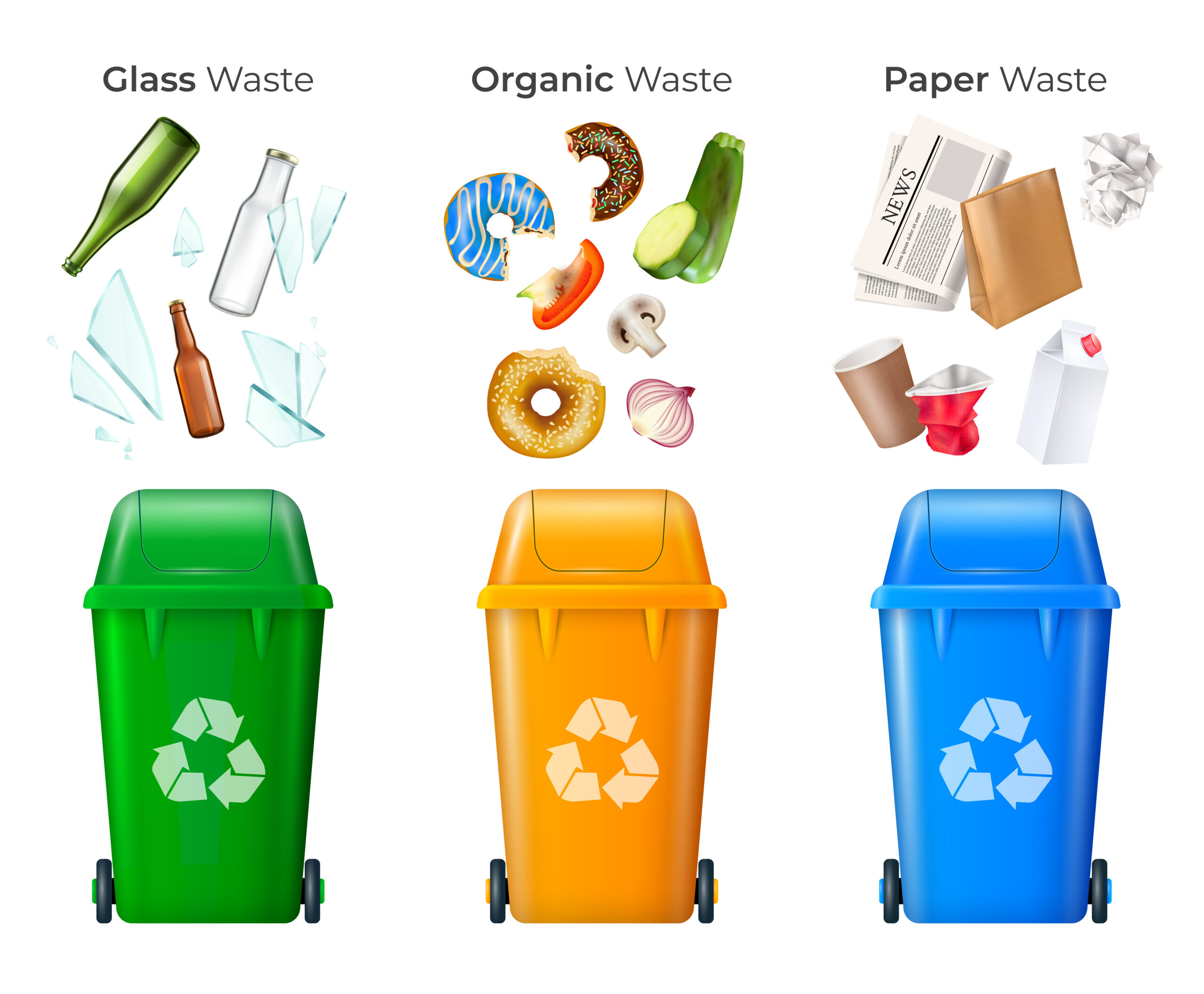Let’s be honest. We all want to live in a clean, green, and healthy environment. But how often do we think about the humble dustbin — the unsung hero in our waste management system? Whether it’s an overflowing street bin in the city or a missing one in a village corner, the presence (or absence) of a dustbin speaks volumes about hygiene, civic sense, and community well-being.
In this blog, we’ll explore the importance of dustbin in urban and rural areas, discuss real-world challenges, and suggest ways to build a cleaner India — one dustbin at a time.
1. Understanding the Role of Dustbin
1.1 What Is a Dustbin, Really?
A dustbin is more than a container for waste. It’s the starting point of waste management — a system that keeps our streets, homes, and cities clean.
1.2 Why Dustbins Matter
Properly placed dustbins prevent littering, reduce foul smell, and encourage people to take responsibility for their environment.
2. Importance of Dustbin in Urban Areas
2.1 Managing High Waste Volumes
Cities generate a huge amount of waste daily. Dustbins help collect and contain this waste in a systematic way.
2.2 Reducing Pollution and Disease
Without dustbins, waste ends up in drains, streets, and open spaces, causing air, water, and soil pollution. This invites mosquitoes, rats, and diseases.
3. Importance of Dustbin in Rural Areas
3.1 Controlling Open Dumping
In many villages, garbage is still dumped in open areas or burned. Dustbins help introduce safe waste collection practices.
3.2 Educating the Community
A visible dustbin in a rural setting can serve as a constant reminder for proper waste disposal, encouraging behavioral change.
🔑 Key Point 1:
Dustbins are not just containers — they’re symbols of cleanliness, health, and civic responsibility.
4. Color-Coded Dustbins: A Game Changer
4.1 Green for Wet, Blue for Dry
Color-coded dustbins promote waste segregation at the source — wet waste in green, dry in blue. This simplifies recycling and composting.
4.2 Impact on Waste Processing
Segregated waste is easier to process, reducing the burden on landfills and increasing efficiency in recycling units.
5. Smart Dustbins in Urban Areas
5.1 IoT and Automation
Smart dustbins equipped with sensors alert authorities when full, preventing overflow and optimizing collection routes.
5.2 Promoting Clean Cities
Smart bins are now part of many Smart City initiatives in India, helping maintain hygiene in busy urban spaces.
6. Challenges in Dustbin Usage
6.1 Overflow and Irregular Pickup
One common problem is bins overflowing due to delayed pickups. This causes mess rather than solving it.
6.2 Vandalism and Neglect
Many bins are damaged, used incorrectly, or simply ignored — defeating the entire purpose.
🔑 Key Point 2:
Technology, awareness, and maintenance must go hand in hand to make dustbins effective in urban and rural settings.
7. Dustbin Placement: Why It Matters
7.1 Accessibility is Key
A dustbin kept far away won’t be used. Strategic placement encourages usage and discourages littering.
7.2 Urban vs Rural Needs
Urban areas may need bins at every 50 meters. Rural setups need central bins at community spots, schools, or markets.
8. Public Awareness and Dustbin Usage
8.1 Awareness Drives
Campaigns like “Swachh Bharat Abhiyan” promote dustbin use. Street plays, posters, and school events are effective tools.
8.2 Youth Engagement
Involving students in cleanliness campaigns helps instill lifelong habits around waste disposal.
9. Health Benefits of Dustbin Usage
9.1 Reducing Disease Spread
Garbage lying in the open is a breeding ground for flies, germs, and pathogens. Dustbins eliminate this risk.
9.2 Safe Waste Disposal
Using a dustbin ensures that sharp objects, broken glass, or infected material doesn’t pose a risk to others.
🔑 Key Point 3:
Proper dustbin usage is directly linked to better public health, lower infection rates, and cleaner surroundings.
10. Dustbins in Schools and Institutions
10.1 Educating the Next Generation
Schools must lead by example by ensuring accessible, color-coded dustbins in classrooms, corridors, and canteens.
10.2 Promoting Accountability
Assigning dustbin cleaning as part of student duties teaches responsibility and environmental ethics.
11. Dustbins in Markets and Public Spaces
11.1 Managing Food and Plastic Waste
Markets generate a mix of wet and dry waste. Separate bins prevent cross-contamination and improve disposal.
11.2 Beautifying the Area
Bins help keep marketplaces clean and inviting, which improves business and customer experience.
12. Role of Local Government and Panchayats
12.1 Urban Municipality Actions
City councils must maintain dustbin infrastructure, provide training to sanitation workers, and ensure timely pickups.
12.2 Rural Panchayat Involvement
Village councils can lead by installing bins near panchayat offices, health centers, and temples.
🔑 Key Point 4:
Sustainable cleanliness requires government support, community involvement, and proper dustbin infrastructure.
13. Community Participation in Cleanliness
13.1 Volunteer Clean-Up Drives
Involving citizens in cleaning their locality can create ownership and increase the value placed on using dustbins.
13.2 Monthly Sanitation Meetings
Regular feedback and planning on waste management strengthen dustbin-related initiatives in both urban and rural areas.
14. Dustbin Innovations for Rural India
14.1 Cost-Effective Bins
Using recycled materials or low-cost cement-based bins can help villages afford quality waste containers.
14.2 Mobile Dustbins
Push-cart dustbins can travel through hamlets collecting waste, especially where people are less mobile.
15. School Projects Around Dustbins
15.1 Waste Audits
Students can conduct audits on the types of waste generated and how dustbins are used (or misused) on campus.
15.2 DIY Dustbins
Crafting dustbins from waste materials like plastic bottles or cardboard can be both educational and practical.
🔑 Key Point 5:
Innovation and community engagement are key to creating dustbin habits, especially in areas lacking basic sanitation.
16. Dustbins and Composting at Source
16.1 Kitchen Composting
Using green bins at homes for wet waste helps composting, reducing landfill pressure and creating organic manure.
16.2 Community Compost Pits
In rural areas, collective compost pits near dustbin sites can turn organic waste into gold.
17. Corporate Responsibility and Dustbins
17.1 Offices and Commercial Establishments
Malls, IT parks, and factories must place adequate dustbins and practice in-house waste segregation.
17.2 CSR-Driven Dustbin Donations
Many companies now sponsor bins in rural schools, markets, and religious places under CSR schemes.
18. Waste Segregation Education
18.1 Visual Aids on Dustbins
Infographics and stickers on bins help educate people on what waste belongs where.
18.2 Rewards for Good Practices
Giving certificates or rewards to homes or shops that use dustbins properly can motivate others.
19. Dustbins and Environmental Impact
19.1 Preventing Plastic Pollution
Dustbins reduce roadside littering and prevent plastics from entering drains, rivers, and oceans.
19.2 Safeguarding Livestock
In rural areas, stray animals often eat waste, falling ill. Dustbins prevent animals from accessing toxic food.
20. Conclusion: Every Bin Counts
20.1 The Small Act That Makes a Big Difference
Using a dustbin is a small act, but it plays a huge role in environmental hygiene, sustainability, and public health.
20.2 The Way Forward
Let’s place more dustbins, educate better, involve communities, and make cleanliness a way of life — in every corner of both cities and villages.
FAQs on Importance of Dustbin in Urban and Rural Areas
- Why is a dustbin important in urban areas?
It manages large volumes of waste, prevents pollution, and supports city cleanliness. - Why do rural areas need dustbins?
Dustbins help eliminate open dumping and promote health and hygiene in villages. - What are color-coded dustbins?
Green for wet waste and blue for dry waste — used to encourage segregation at source. - Are smart dustbins effective?
Yes, they alert authorities when full and improve efficiency in waste collection. - Can dustbins prevent disease?
Absolutely. They stop waste from becoming breeding grounds for germs and insects. - How can schools promote dustbin usage?
By placing bins in classrooms, teaching segregation, and involving students in sanitation drives. - What is the role of government in dustbin management?
They must provide infrastructure, monitor usage, and ensure regular cleaning. - Are dustbins only for cities?
No. Rural areas need dustbins too — perhaps even more to reduce harmful traditional waste practices. - How can we increase dustbin use in villages?
Through education, low-cost bins, and community engagement. - What are the alternatives to plastic dustbins?
Cement bins, bamboo containers, and recycled plastic bins offer eco-friendly options.

